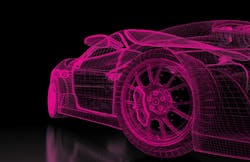This Week's Top Advanced Vehicle Design News
July 13, 2021—As the technology available in vehicles continues to rapidly evolve, the presence of telematic devices, which are designed to gather and share data from a car to optimize every aspect of its production, maintenance and overall lifespan, is becoming increasingly prominent.
Kurt Wyman, vice president of sales and general manager of California-based telematics company Teletrac Navman, spoke with ADAPT about the development of the telematics market and how aftermarket shops have to prepare to handle the increasingly common -- and wildly different -- types of tech that might roll into their service centers.
Telematics 101
Wyman says telematics has a broad range of applications throughout the automotive industry. Many Teletrac Navman customers use telematic systems to monitor potential bad driving habits in their drivers such as speed or sudden turning/deceleration by monitoring how fast the vehicle is going in any location at any time.
Beyond fleets, though, Wyman says telematics can be used to monitor any given system inside a vehicle to determine how well that vehicle is doing. Regardless of what vehicle a telematics system is installed in, be it a fleet of light-weight pick-up trucks or a backhoe on a construction site, the system is designed to monitor both the short- and long-term health of the vehicle and report any problems before it breaks down.
“Telematics is integrated with the vehicle to capture more data,” Wyman says. “So it's not just (tracking) where it is or how fast it's going, but also what's going on with that vehicle. What is the health of that engine? Are the fluids low? Is there a transmission problem potentially lurking around the corner?”
As the technology advances, Wyman says real-time incident reporting could help repair shops better serve customers, whether they’re coming in for routine maintenance or for something more unexpected.
“(Let’s say) there was an accident, and it just happened. We capture that data immediately and could send that data to a repair shop close by saying ‘one of John Smith’s vehicles just had a problem … be ready, you’ve got a work order coming in for some repairs,” Wyman says. “If you can capture that data on a vehicle and send it to the right people, you can streamline the process of fixing the problem after it happens.”
To read more about the effect on the automotive aftermarket, head to the full story at ADAPT.
